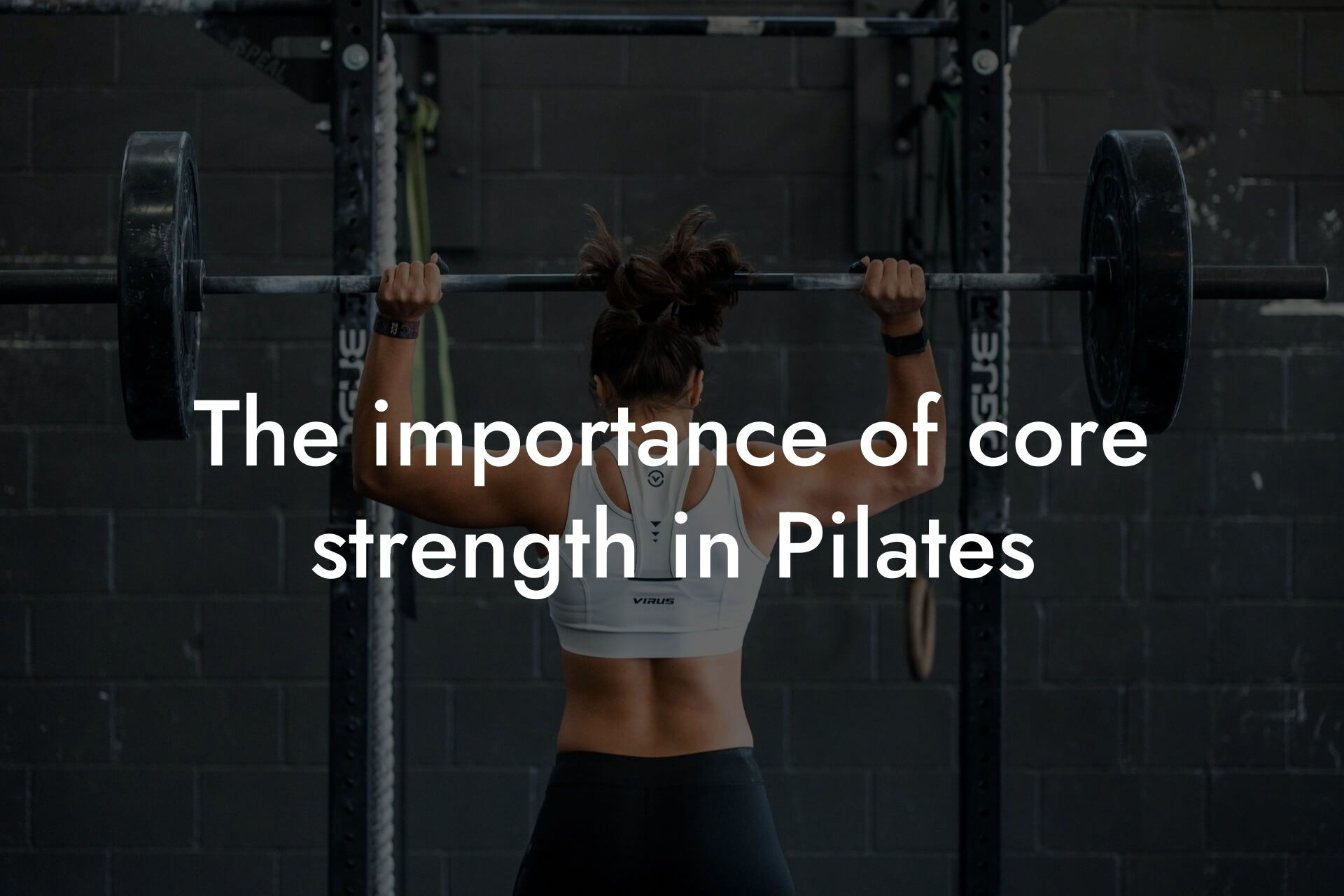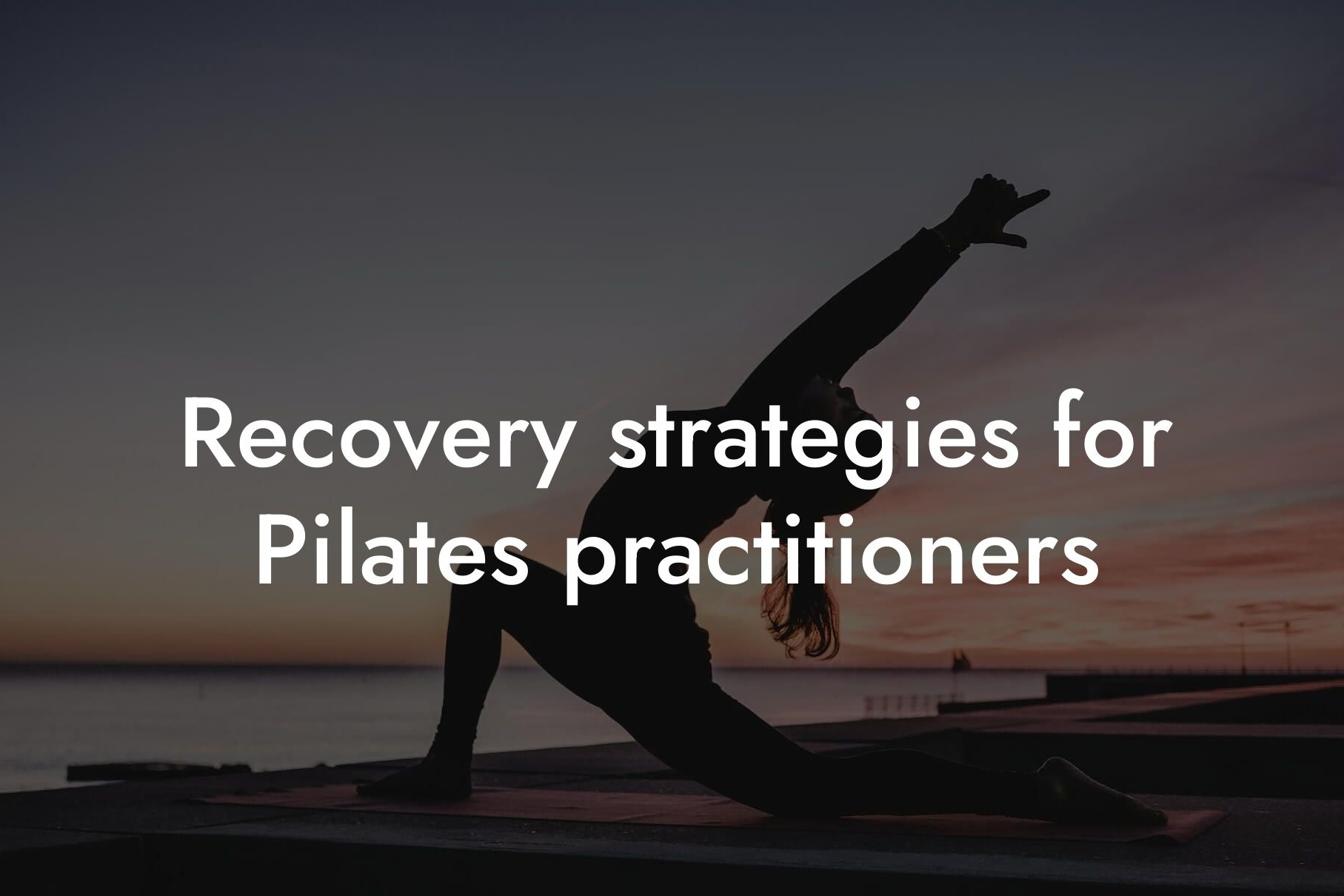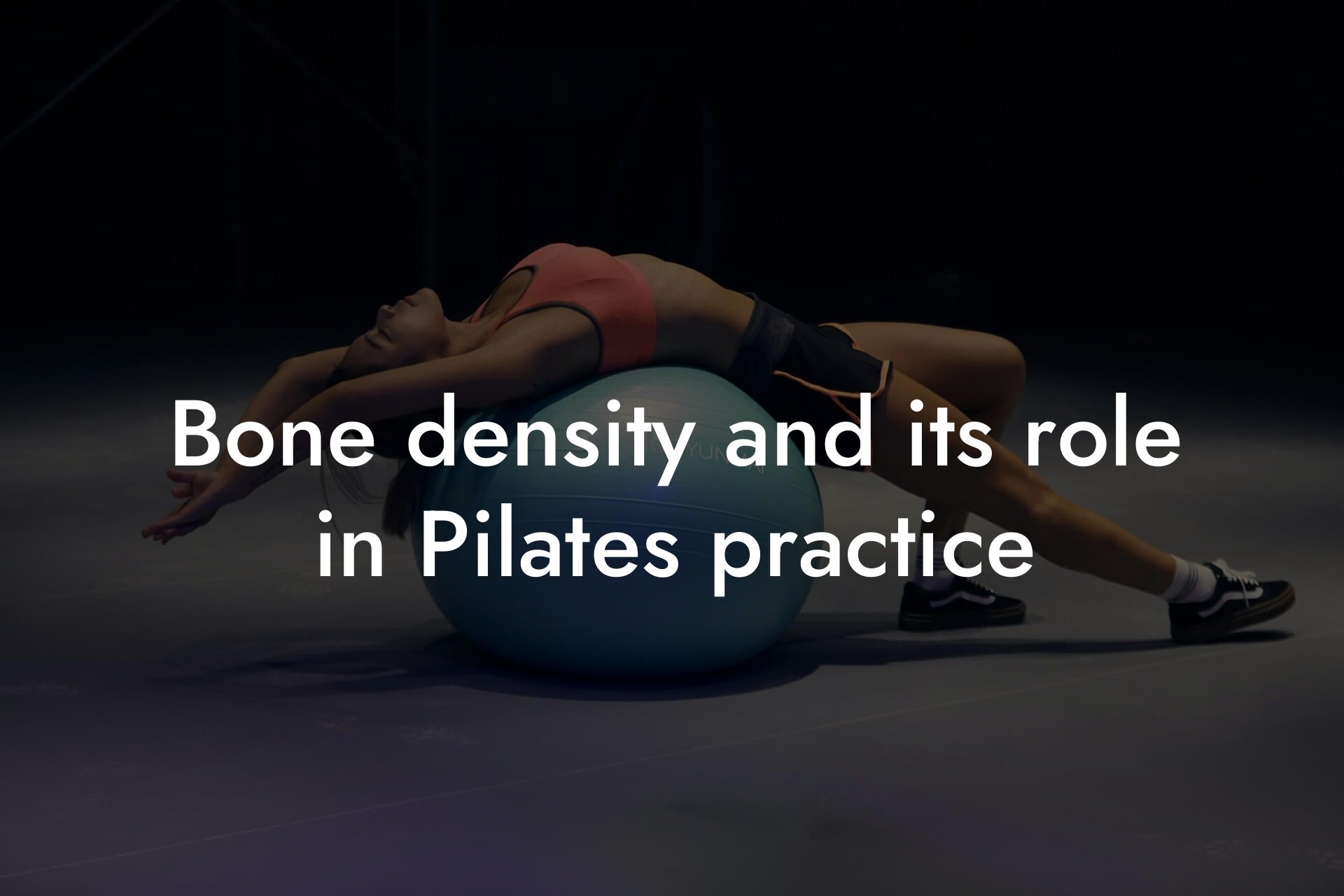As a high-earning professional, you understand the importance of maintaining a healthy and fit physique. Pilates is an excellent way to achieve this goal, but it's even more effective when combined with a low body fat percentage. Excess body fat can hinder your Pilates performance, making it more challenging to achieve the desired results. In this article, we'll explore the benefits of reducing body fat for improved Pilates results and provide you with a comprehensive guide on how to achieve it.
Table of Contents
Why Body Fat Matters in Pilates
Body fat plays a significant role in Pilates performance. Excess body fat can affect your flexibility, balance, and overall movement. When you have a high percentage of body fat, it can:
- Reduce your range of motion, making it more difficult to perform exercises correctly
- Increase your risk of injury, as excess fat can put additional stress on your joints
- Decrease your overall strength and endurance, making it harder to maintain proper form
On the other hand, reducing body fat can improve your Pilates performance by:
- Increasing your flexibility and range of motion
- Enhancing your balance and coordination
- Boosting your strength and endurance
Understanding Body Fat Percentage
Body fat percentage is the ratio of body fat to lean body mass. It's essential to understand your body fat percentage to set realistic goals and track your progress. A healthy body fat percentage for men is typically between 8-19%, while for women, it's between 21-33%. However, for optimal Pilates performance, it's recommended to aim for a body fat percentage of 10-15% for men and 16-20% for women.
How to Measure Body Fat Percentage
There are several ways to measure body fat percentage, including:
- DEXA scan: A DEXA (Dual-Energy X-ray Absorptiometry) scan is a highly accurate method that measures body fat percentage, lean body mass, and bone density.
- Hydrostatic weighing: This method involves weighing yourself underwater to determine your body density, which can then be used to estimate body fat percentage.
- Skilled skinfold measurements: A trained professional uses skinfold calipers to measure the thickness of your skin folds at specific points on your body.
- Body fat calipers: A simpler and less accurate method that involves measuring the thickness of your skin folds using a body fat caliper.
Nutrition for Reducing Body Fat
A well-balanced diet is crucial for reducing body fat. Focus on whole, unprocessed foods, including:
- Lean protein sources: chicken, fish, tofu, and legumes
- Complex carbohydrates: brown rice, quinoa, whole wheat bread, and vegetables
- Healthy fats: avocado, nuts, and seeds
Aim to create a calorie deficit by eating fewer calories than your body burns. A safe and sustainable rate of weight loss is 1-2 pounds per week. Avoid fad diets and quick fixes, as they can lead to nutrient deficiencies and muscle loss.
Exercise for Reducing Body Fat
In addition to Pilates, incorporate other forms of exercise to help reduce body fat, including:
- Cardio exercises: running, cycling, or swimming for 30-45 minutes, 3-4 times a week
- Resistance training: weightlifting or bodyweight exercises to build muscle mass
- High-Intensity Interval Training (HIIT): short bursts of intense exercise followed by brief periods of rest
Remember to listen to your body and adjust your exercise routine accordingly. It's essential to balance exercise with rest and recovery to avoid injury and burnout.
Additional Tips for Reducing Body Fat
In addition to nutrition and exercise, consider the following tips to help reduce body fat:
- Get enough sleep: aim for 7-9 hours of sleep per night to help regulate hormones and metabolism
- Manage stress: engage in stress-reducing activities like yoga, meditation, or deep breathing exercises
- Stay hydrated: drink plenty of water throughout the day to help boost metabolism and digestion
Reducing body fat is a crucial step in achieving optimal Pilates results. By understanding your body fat percentage, making nutritional changes, incorporating exercise, and adopting healthy lifestyle habits, you can improve your overall Pilates performance and achieve a stronger, leaner physique. Remember to be patient and consistent, as reducing body fat takes time and effort. With the right approach, you can achieve your goals and take your Pilates practice to the next level.
Get Started with Tano Performance Group
At Tano Performance Group, we understand the importance of accurate body fat measurement and comprehensive body assessment. Our state-of-the-art DEXA machine provides you with a detailed report on your body composition, including body fat percentage, lean body mass, and bone density. Take the first step towards achieving your fitness goals and schedule a DEXA scan with us today.
Frequently Asked Questions
What is the ideal body fat percentage for Pilates?
For optimal Pilates performance, it's recommended to maintain a body fat percentage between 18-24% for men and 25-31% for women. However, this can vary depending on individual goals and body composition. It's essential to focus on reducing body fat percentage, rather than just weight loss, to achieve improved Pilates results.
How does excess body fat affect Pilates performance?
Excess body fat can hinder Pilates performance by reducing flexibility, mobility, and balance. It can also increase the risk of injury, as excess weight puts additional stress on joints and muscles. Furthermore, excess body fat can make it more challenging to maintain proper form and alignment, leading to poor technique and reduced effectiveness.
What are the benefits of reducing body fat for Pilates?
Reducing body fat can significantly improve Pilates performance by increasing flexibility, mobility, and balance. It can also enhance overall physical fitness, boost confidence, and reduce the risk of injury. Additionally, reducing body fat can help improve body awareness, allowing for more precise and controlled movements.
How can I measure my body fat percentage?
There are several ways to measure body fat percentage, including skinfold measurements, bioelectrical impedance analysis (BIA), dual-energy X-ray absorptiometry (DXA), and hydrostatic weighing. It's recommended to consult with a healthcare professional or certified fitness expert to determine the most accurate method for your individual needs.
What is the best way to reduce body fat for Pilates?
A combination of a healthy diet, regular exercise, and lifestyle changes is the most effective way to reduce body fat for Pilates. Focus on consuming a balanced diet with plenty of protein, healthy fats, and complex carbohydrates, while also incorporating Pilates exercises that target core strength, flexibility, and overall physical fitness.
How does Pilates help with weight loss and body fat reduction?
Pilates can help with weight loss and body fat reduction by increasing caloric expenditure, improving muscle tone, and enhancing overall physical fitness. Additionally, Pilates exercises can help improve posture, balance, and body awareness, leading to more efficient and effective movements.
Can I reduce body fat with Pilates alone?
While Pilates can be an effective tool for reducing body fat, it's unlikely to achieve significant results with Pilates alone. A comprehensive approach that includes a healthy diet, regular cardio exercise, and lifestyle changes is necessary for optimal body fat reduction.
How often should I practice Pilates to see results?
For optimal results, it's recommended to practice Pilates at least 2-3 times per week, with a minimum of 30-45 minutes per session. Consistency is key, so aim to make Pilates a regular part of your fitness routine.
What are the best Pilates exercises for weight loss and body fat reduction?
Some of the most effective Pilates exercises for weight loss and body fat reduction include the hundred, teaser, and side bends. These exercises target core strength, flexibility, and overall physical fitness, making them ideal for improving Pilates performance and reducing body fat.
How can I modify Pilates exercises to suit my fitness level?
Modifying Pilates exercises to suit your fitness level is essential for optimal results and injury prevention. Consult with a certified Pilates instructor or fitness expert to learn how to modify exercises based on your individual needs and abilities.
Can I do Pilates at home or do I need to join a studio?
You can do Pilates at home with online tutorials, DVDs, or apps, or join a studio for personalized instruction and guidance. Both options have their benefits, so choose the one that best fits your lifestyle and preferences.
How long does it take to see results from Pilates and body fat reduction?
The time it takes to see results from Pilates and body fat reduction varies depending on individual factors, such as starting fitness level, diet, and exercise frequency. However, with consistent effort and a comprehensive approach, you can expect to see noticeable results within 6-12 weeks.
What role does nutrition play in reducing body fat for Pilates?
Nutrition plays a crucial role in reducing body fat for Pilates. Focus on consuming a balanced diet with plenty of protein, healthy fats, and complex carbohydrates, while also staying hydrated and limiting processed foods and added sugars.
How can I stay motivated to reduce body fat and improve Pilates performance?
Staying motivated requires setting realistic goals, tracking progress, and celebrating small victories. Find a workout buddy, join a Pilates community, or consult with a fitness expert to help stay motivated and accountable.
What are some common mistakes to avoid when trying to reduce body fat for Pilates?
Common mistakes to avoid include crash dieting, overexercising, and neglecting proper form and technique. Focus on making sustainable lifestyle changes and prioritize overall physical fitness and well-being.
Can I reduce body fat and improve Pilates performance at any age?
Absolutely! It's never too late to start reducing body fat and improving Pilates performance. With a comprehensive approach and consistent effort, individuals of any age can achieve significant results and improve overall physical fitness.
How does reducing body fat improve overall health and well-being?
Reducing body fat can significantly improve overall health and well-being by reducing the risk of chronic diseases, improving mental health, and enhancing overall physical fitness. Additionally, reducing body fat can boost confidence and self-esteem, leading to a more fulfilling and active lifestyle.
What are some additional tips for reducing body fat and improving Pilates performance?
Additional tips include getting enough sleep, managing stress, and incorporating high-intensity interval training (HIIT) into your workout routine. Stay consistent, patient, and committed to your goals, and you'll be on your way to achieving optimal Pilates performance and reducing body fat.
How can I track my progress and measure the effectiveness of my Pilates routine?
Track your progress by taking body measurements, monitoring weight loss, and assessing overall physical fitness. Use a fitness tracker or journal to monitor your workouts, and consult with a fitness expert or healthcare professional to assess the effectiveness of your Pilates routine.
What are some common myths about reducing body fat and improving Pilates performance?
Common myths include the idea that Pilates is only for flexibility and stretching, or that reducing body fat requires extreme dieting and exercise. Debunk these myths by focusing on a comprehensive approach that includes a healthy diet, regular exercise, and lifestyle changes.
How can I incorporate Pilates into my busy schedule?
Incorporate Pilates into your busy schedule by finding a studio or online program that offers flexible scheduling, or by practicing Pilates at home during breaks or lunch hours. Even small amounts of Pilates practice can have a significant impact on overall physical fitness and body fat reduction.
What are some additional resources for reducing body fat and improving Pilates performance?
Additional resources include consulting with a fitness expert or healthcare professional, joining a Pilates community or online forum, and exploring Pilates DVDs, apps, and online tutorials. Stay informed and motivated by staying up-to-date with the latest research and trends in Pilates and body fat reduction.
Here are some related articles you might love...
- The importance of core strength in Pilates
- Recovery strategies for Pilates practitioners
- Bone density and its role in Pilates practice
- Nutrition tips for maximizing energy during Pilates sessions
- How body composition impacts Pilates performance
- Using DEXA scans to optimize Pilates training
- How to integrate Pilates into a balanced fitness routine
- Maintaining flexibility and muscle tone with Pilates
- Pilates for injury prevention and rehabilitation
Zak Faulkner
Zak Faulkner is a leading authority in the realm of physical health and body composition analysis, with over 15 years of experience helping professionals optimise their fitness and well-being. As one the experts behind Tano Performance Group, Zak has dedicated his career to providing in-depth, science-backed insights that empower clients to elevate their physical performance and overall health.
With extensive knowledge of DEXA technology, Zak specializes in delivering comprehensive body assessments that offer precise data on body fat, muscle mass, bone density, and overall physique. His expertise enables individuals to make informed decisions and achieve their fitness goals with accuracy and confidence. Zak’s approach is rooted in a deep understanding of human physiology, combined with a passion for helping clients unlock their full potential through personalised strategies.
Over the years, Zak has earned a reputation for his commitment to excellence, precision, and client-focused service. His guidance is trusted by top professionals who demand the best when it comes to their health. Whether advising on fitness programs, nutritional strategies, or long-term wellness plans, Zak Faulkner’s insights are a valuable resource for anyone serious about taking their health and fitness to the next level.
At Tano Performance Group, Zak continues to lead our Content Team revolutionising how professionals approach their physical health, offering unparalleled expertise that drives real results.




